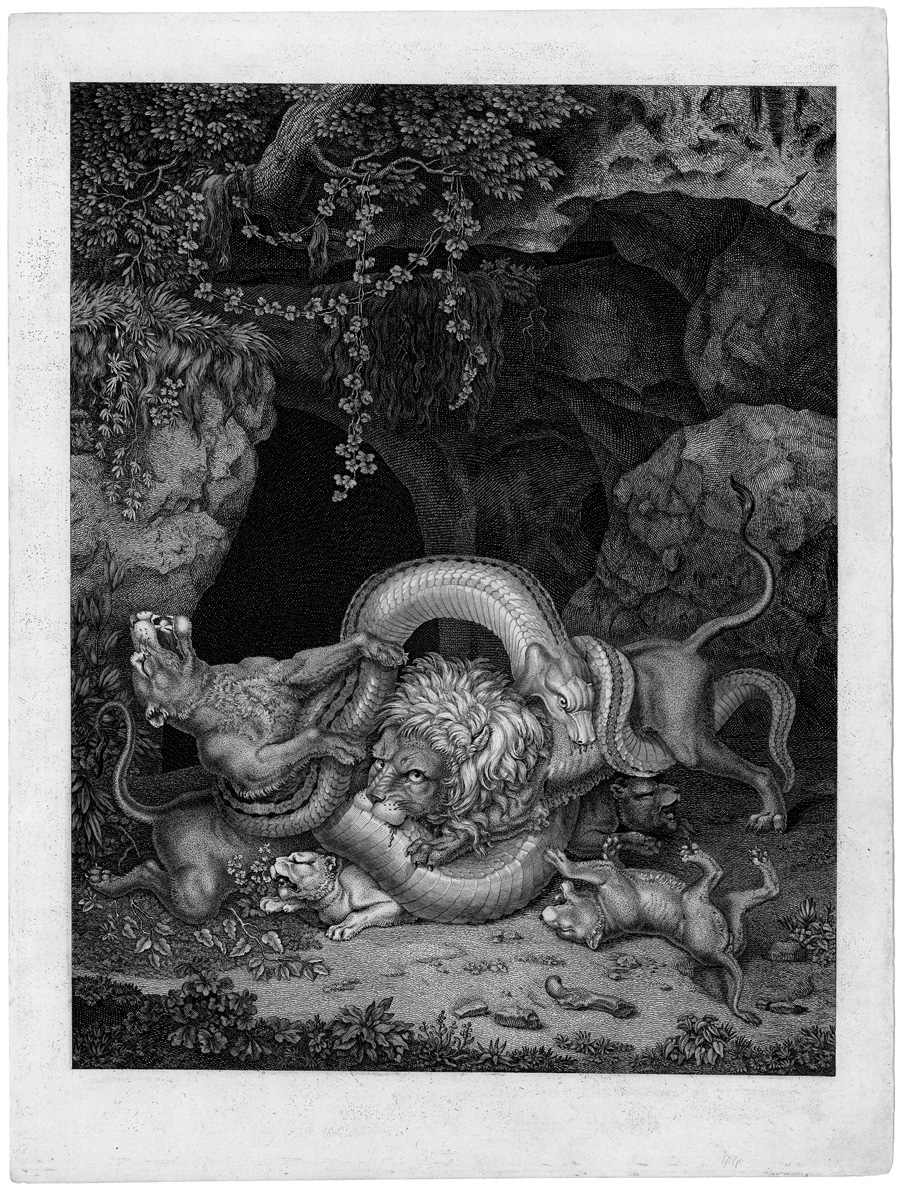Loading the page ...
Johann Heinrich Wilhelm Tischbein
(called the „Goethe-Tischbein“, 1751 Haina – 1829 Eutin)
Pair of Lions Fighting a Giant Serpent, or the Animal Laocoön. Etching. 50.8 x 39.2 cm. (1796). Andresen 109.
This impressive print belongs to the set of Character Animal Heads, which Tischbein produced in Naples in 1796. In 1783 the artist’s second tour of Italy had taken him to Rome, where in 1786 he made the acquaintance of Johann Wolfgang von Goethe, a meeting of fundamental significance for his future artistic career. In February 1787 Tischbein and Goethe travelled together to Naples, where the artist went to live in the summer of the same year. Shortly afterwards, in 1789, Tischbein was appointed director of the art academy there. The set of 16 etchings of Animal Heads was part of an effort to convey the various expressions of human characters to the students at the academy. Tischbein hit on the idea of using animal physiognomies to represent human emotional states by proxy.
The Pair of Lions Fighting a Giant Serpent is unquestionably the masterpiece of the series. In view of its similarity to the ancient Laocoön group, Tischbein’s contemporaries dubbed this spectacular and dramatic composition the Animal Laocoön. In front of a cave overgrown with ivy a bitter struggle is in progress between a gigantic serpent and a pair of lions with three cubs. The animals are locked in ferocious combat and a bloody cycle ensues. While the body of the lioness is entwined and crushed by the reptile, the lion is ripping open the body of the serpent and being mortally wounded by it in the process; even the cubs are crushed under the weight of the combatants. Tischbein uses the scene as a metaphoric warning against the senselessness of human violence; the preliminary drawing for the etching bears the following caption in the artist’s own hand: "Even the mighty perish in combat". The extraordinarily differentiated etching technique, which displays an imposing repertoire of different hatching patterns, is in keeping with the pathos of the scene and constitutes an impressive tribute to Tischbein’s stylish draughtsmanship.
A brilliant, sharp and contrasting impression, trimmed to the platemark at three sides and with thread margins below. Slight aging, otherwise in very good condition.
